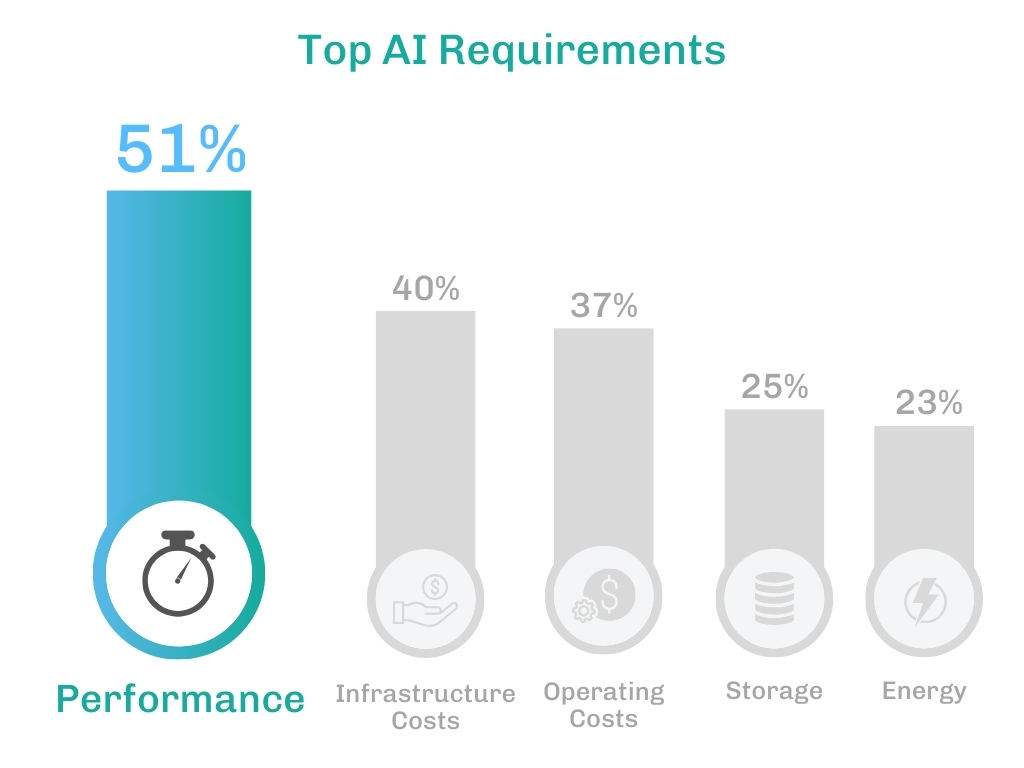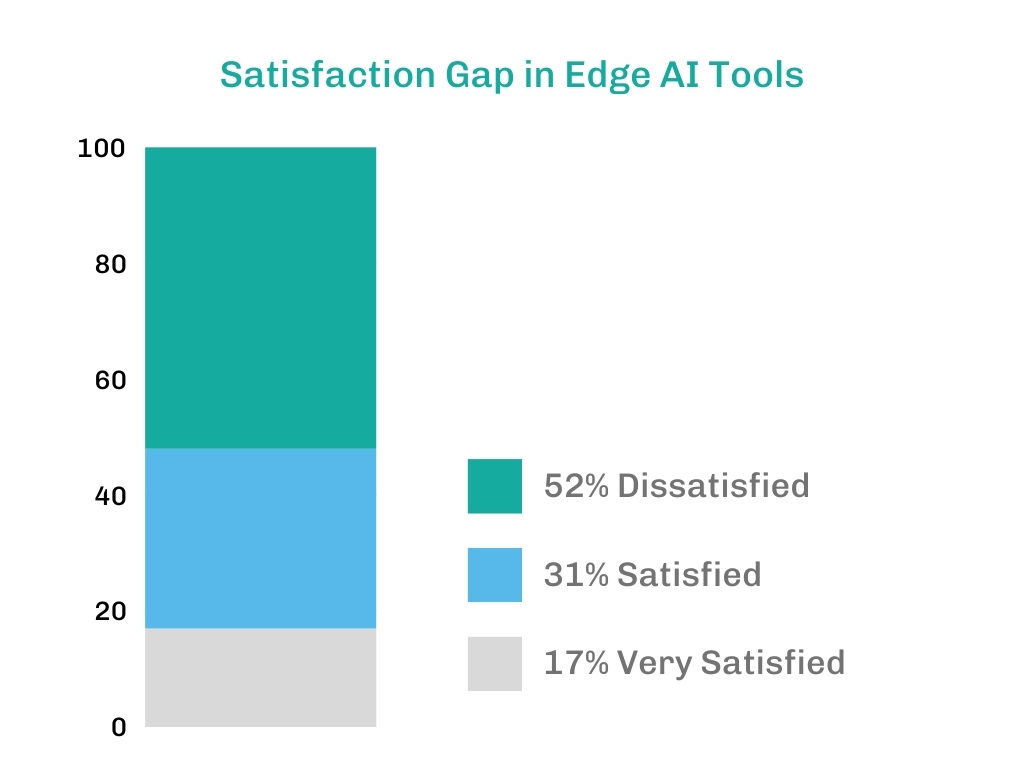Developers
Beyond the Cloud: Edge AI Takes Center Stage for Critical Operations, New Research Finds
Speed and reliability eclipse cost as organizations shift from cloud to edge
PRINCETON, NJ — May 7, 2025 — In a world where split-second decisions determine success or failure, edge AI is proving to be the backbone of mission-critical operations. That’s the key finding of a new report from Latent AI and TechStrong Research, titled “Leveraging the Edge When AI Must Be Real-Time, Reliable, and Low Latency“. Latent AI, a leader in edge AI solutions for national security and defense, underscores this shift.
The report reveals a major pivot in AI deployment strategies. While cloud AI leads with 42% of deployments compared to edge AI’s 14%, organizations are increasingly turning to edge solutions for their unmatched speed and reliability. Unlike cloud systems, edge AI delivers instant performance—crucial for real-world scenarios like autonomous drones navigating battlefield threats in real-time or industrial sensors detecting and addressing factory floor failures before they escalate.
Performance, not pennies, fuels edge AI’s rise
Forget cost-cutting—edge AI’s surge is all about power under pressure. The research reveals clear priorities:
- 51% of respondents rank performance as their top concern
- 40% prioritize infrastructure costs
- 37% focus on operating expenses

Organizations are fundamentally reevaluating how they deploy AI. These core requirements align perfectly with edge computing’s strengths, particularly its ability to process data right where it’s generated—a capability 43% of organizations call essential for applications where even a millisecond’s delay could spell failure.
Reliability and low latency are each cited by 39% of respondents as key drivers, overshadowing cost savings at 35%. This shift isn’t about trimming budgets; it’s about enabling systems that can’t afford to falter, from defense operations requiring split-second threat detection to industrial setups needing instant anomaly alerts.
“This research validates what we’ve observed in the market, organizations recognize that edge AI offers critical performance advantages for time-sensitive applications, but they’re struggling with implementation due to expertise gaps and inadequate tools,” said Jags Kandasamy, CEO and Co-founder of Latent AI. “The battlefield and factory floor share a common need: intelligence that responds in milliseconds, not seconds. When life, equipment, or critical infrastructure is at stake, waiting for cloud servers to process and return data isn’t just inefficient—it’s potentially catastrophic. Edge AI isn’t just an architectural choice; it’s becoming an operational necessity for organizations where performance means survival.”
Read the Blog: The Performance Imperative: Why Edge AI Is Becoming Mission-Critical
Edge AI: High demand meets critical implementation challenges
The research paints a clear picture of edge AI’s rise—and its challenges:
- 52% are unhappy with current edge AI tools, signaling a desperate need for better solutions to unlock edge potential.
- 95% require customized solutions, reflecting the diverse, demanding nature of mission-critical use cases.
- 43% prioritize real-time data processing, highlighting why edge AI’s speed is a game-changer over cloud delays.

Yet for all its promise, edge AI’s ascent isn’t without friction. A glaring 52% of organizations are dissatisfied with the tools available today, which simply aren’t keeping pace with market demands. Customization is non-negotiable, 95% need solutions tailored to their unique challenges, with 55% seeking full control over their systems and 40% wanting adjustable parameters to fine-tune performance. But only 17% report being “very satisfied” with what’s on offer, exposing a yawning gap between ambition and execution.

Talent shortages make it worse: 34% lack the expertise to design and build edge AI systems, and another 34% struggle to keep them running once deployed.
“The talent gap represents a critical bottleneck for organizations seeking to deploy AI at the edge,” Kandasamy noted. “What we’re seeing isn’t just a technology challenge—it’s fundamentally a human one. Organizations have the vision but lack the specialized expertise to implement it at scale. This highlights the urgent need for tools that automate complex aspects of edge model optimization and deployment while still providing the deep customization that these specialized use cases require.”
Bridging cloud and edge: The future takes shape
The future of edge AI lies in bridging it with the cloud, a hybrid strategy that’s gaining traction fast. A robust 56% of respondents say they prefer cloud-based development tools even for edge deployments, tapping into familiar workflows to smooth the leap from centralized systems to distributed intelligence.
Cloud tools offer a springboard for teams already stretched thin, while emerging solutions like automated optimization frameworks and pre-validated “recipes” are slashing the complexity that’s long plagued edge rollouts. These shortcuts are proving vital, accelerating deployment timelines and helping organizations sidestep the steep learning curve that edge AI often demands. The research reveals that reducing time to market is a critical factor, with organizations reporting that automated toolchains can cut edge AI deployment times by as much as 73% compared to traditional development approaches.
“The data clearly shows how edge AI is reaching an inflection point,” said Guy Currier, Analyst at The Futurum Group and author of the report. “Organizations recognize how AI at the edge can address critical performance needs, but struggle with its particular complexities. The most successful platforms for enabling edge AI will marry familiar cloud-based AI development with automated edge optimization, usefully masking the complexities while preserving the control these organizations seek.”
“Organizations are looking for platforms that feel familiar and leverage their existing cloud expertise, while automating the complex optimization required for edge deployment,” Kandasamy added. “They need tools that eliminate the specialized knowledge barriers while still giving them control over the parameters that matter most for their specific use cases. Our research shows that accelerating time to market is a critical concern, with 61% of organizations reporting that long implementation cycles significantly delay their edge AI initiatives and impact operational readiness.”
- Download the Report: Leveraging the Edge When AI Has to Be Real-Time, Reliable, and Low Latency
- Read the White Paper: AI’s Edge Continuum: A New Look at the Cloud Computing Role in Edge AI
- Watch Techstrong TV: The Future of AI: At the Edge with Latent AI’s Jags Kandasamy
- Watch the Webinar: Revolutionizing Sports Analytics for Real-time Insights with Edge AI
About Latent AI
Latent AI delivers edge AI solutions that enable rapid deployment of artificial intelligence capabilities on any device. Founded in 2018, the company’s developer platform helps government and commercial organizations implement efficient, secure AI solutions at the edge. Latent AI’s tools enable developers to build and update secure, adaptive models for field or laboratory use, serving defense and commercial customers. For more information, visit latentai.com.
Media Contact:
Carmen Harris
Latent AI





